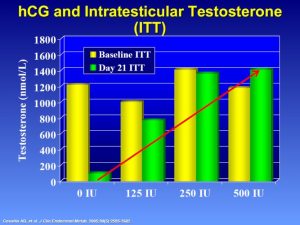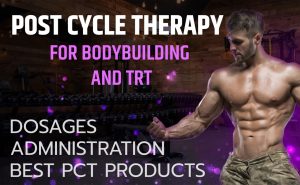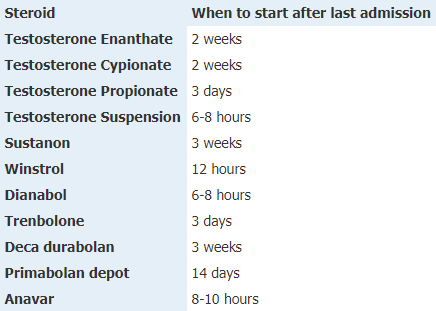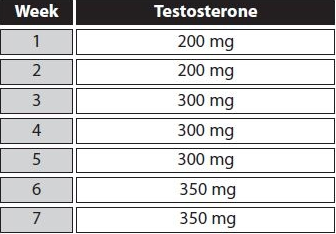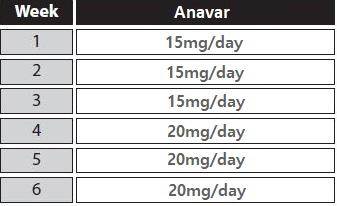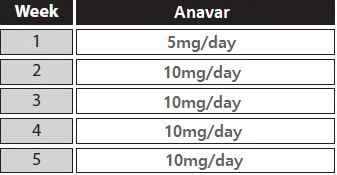HCG is effective when used with other compounds rather than it being used alone and while it has seen some mainstream promotion as a failed (and illegal) weight loss ingredient, HCG’s real power lies in its ability to help steroid users achieve a major goal after a steroid cycle: to get natural testosterone back on track again.
What is HCG (Human Chorionic Gonadotropin)?
Human Chorionic Gonadotropin is a hormone naturally found in women and has an important role to play in pregnancy; in fact the hormone is only formed once a woman is pregnant as it is produced after implantation by the placenta and once HCG levels rise enough it is enough to confirm if a woman is pregnant.

If you’re a male steroid user you might then wonder how or why such a hormone could possible be of use to you. HCG does have a medical role for men: to treat low testosterone or hypogonadism.
Steroid users find HCG useful because it functions almost exactly like luteinizing hormone (LH). LH can be described as a pituitary analog to HCG because they are hormones produced in different parts of the body (luteinizing hormone forms in the pituitary gland) but have a similar function.
This is where HCG becomes very relevant to men: LH is vital for stimulating natural testosterone production. This is what makes HCG a popular option for PCT usage in particular, where the recovery of normal testosterone function following anabolic steroid suppression is required.
While SERMs and aromatase inhibitors are generally widely accepted as a necessary addition for any steroid user, HCG comes under much more debate with some anabolic steroid users swearing by its use, and others finding that it is not necessary or useful or comes with a greater risk than the other drugs.
In any case, when HCG is used it is rarely used alone but in conjunction with SERMs in post cycle therapy and only at low doses for short periods of time if used during a steroid cycle.
Although considered a side effect friendly hormone for most people, HCG comes with one particular risk factor that we need to be concerned about, and this revolves around dependence.
Thankfully this can be well controlled through sensible dosing and is a critical reason why HCG shouldn’t be taken until you’ve done adequate research into just how much you should be taking so you don’t put yourself at risk of dependence.
HCG and Steroids
For steroid users who make use of HCG while using anabolic steroids the intent is to use this hormone to address the suppression of natural hormones that takes place when you use most types of steroids.
During this time your normal testosterone production and levels will be extremely low or even non-existent and the use of HCG during steroid use can prevent the problem of testicular atrophy but more importantly, taking HCG during a steroid cycle helps prime the body for recovery once your cycle ends.
So what’s the downside to HCG and why doesn’t everyone just use it during a cycle? One of the commonly overlooked issues is the way the male body can become dependent on HCG’s supply of what is basically exogenous luteinizing hormone. Guys who take too much HCG or don’t seriously regulate use of it are at higher risk of dependence.
Those men who go overboard with their use of HCG during a steroid cycle, either through lack of knowledge or a false belief that more equals better, can quickly find themself suffering with a low testosterone condition. Those who know how to use HCG responsibly during a steroid cycle however will reap the benefits and avoid the problem of dependence occurring.
HCG vs Aromatase Inhibitors vs SERMs
HCG is very different from both SERMs and aromatase inhibitors (AIs).
Both SERMs and AIs are medications that have been designed to either block specific estrogen receptors (in the case of SERMs), or to lower overall estrogen levels (AIs). HCG on the other hand is a naturally occurring hormone produced in women once they fall pregnant.
HCG does not target estrogen in any way, but instead is able to directly help stimulate testosterone in men because it works in a very similar way to luteinizing hormone.
Both SERMs and AIs are mainly used to treat breast cancer in women. HCG is used medically to treat low testosterone and infertility and men, as well as fertility problems in women. All three categories of substances are therefore available with a prescription. While both SERMs and AIs are available as different products with slightly differing chemical structures and effects between them, HCG is the only one of the three that is a single hormone with no variation between products.
HCG is available in injection form only, while AI and SERM drugs are oral tablets that need to be taken more regularly than the once or twice weekly injections that HCG is normally administered by.
HCG is not intended to replace either SERMs or AIs at any point during or after a steroid cycle. Instead it is can be a very useful addition but one that needs to be used carefully and with knowledge of both how to dose it properly and what it can and can’t do both in benefits and side effects. Over-use of HCG can have the opposite of your intended effect: instead of improving or restoring your testosterone you could find yourself back in a low testosterone state.
HCG for Post Cycle Therapy (PCT)
Post cycle therapy use of HCG is the most common reason guys will use this hormone for the purpose of optimizing recovery after a steroid cycle. The power of this hormone for PCT use comes with taking it before starting a SERM cycle.
Most PCT plans will include either or both of the SERMs Nolvadex (Tamoxifen Citrate) and Clomid (Clomiphene Citrate) and while these are generally very effective on their own, many steroid users find that adding HCG to the PCT phase provides enhanced recovery benefits.
The strategy here is to make use of HCG prior to starting your regular SERM dosage, with HCG essentially acting as a kick start to the hormone production process thanks to the way it mimics luteinizing hormone. The SERMs then take over for the rest of your PCT cycle, providing a more efficient and effective recovery.
This type of PCT plan provides for the two main purposes of post cycle therapy: to help you maintain your gains and to speed up the restart of natural testosterone production; this hormone will be in a greatly suppressed state at the end of your steroid cycle in most cases and without a proper PCT plan the rate of recovery is extremely slow which puts you in the certain position of low testosterone and the associated symptoms and muscle loss.
HCG will usually be started within a 4 to 6 week period after the end of your steroid cycle but the timing will depend on the steroid compounds you’ve used. Those who are concerned about possible estrogenic side effects from using HCG during PCT, because of increased aromatase activity, might also choose to include an aromatase inhibitor into their PCT plan.
This is not always an effective idea because AIs come with their own set of issues when it comes to potentially negatively impacting on testosterone levels because of powerful estrogen suppression; in general, HCG is utilized for a short time frame during PCT so side effects are not a great concern for most users.
HCG Dosage
Whichever purpose you are using HCG for – on cycle or for PCT – the dosage and administration of this hormone is very sparse and controlled and unlike that of any other compound you will be using whether that be steroids themselves or drugs like SERMs and AIs.
When buying HCG from your chosen source you will normally receive a small packet of powder containing the active ingredients and another with sterile water in it. These two items are to be mixed together to form your injectable ingredient. Any left over must be refrigerated for later use – do not store the solution at room temperature.
HCG Dosage During Anabolic Steroid Use
When using HCG during your steroid cycle you will want to take it no more than once every 3 to 5 days at a maximum. This will come as some relief since HCG is an injection so you won’t have to be adding an extra injection to your steroid program too often.
A very low dose of HCG during this time is considered sufficient and this is usually in the realm of 250iu. There is no benefit to increasing the dose beyond this level, nor the frequency of administration.
This modest dosage is enough to give you all the benefits you want from HCG without putting your future testosterone restoration at risk by having the body become dependent on HCG which is an increased risk when you increase the dose – therefore, 250iu once every 5 days is suitable for the vast majority of male steroid users while on cycle.
HCG Dosage for Increased Endogenous Testosterone Secretion and PCT
HCG is most commonly used as a kick start to your PCT cycle in preparation for the use of SERMs afterwards. The length and dose of HCG during this time should be determined on how powerful your steroid cycle was and the level of testosterone suppression it is likely to have caused. This can be difficult for new steroid users to gauge initially so a lower HCG dose is advised in those circumstances.
Many users will take HCG for a period of two to three weeks with doses every 3 or 4 days starting at 1000iu at the low end right up to 4000iu. This higher dosage is advised only for advanced users who have used HCG previously and understand its effects. Following this short HCG cycle, SERM administration can begin to carry through the rest of your PCT phase.
Female HCG Dosage
HCG is very useful medically for females for the purpose of improving fertility, but it has no use for women who are using steroids. Men experience suppressed testosterone from most steroids but this is clearly not an issue that female steroid users need to be concerned with, therefore the use of HCG is not warranted by women outside of medical use.
HCG Side Effects
One of the great positive about HCG is that side effects are rare to non-existent. Unlike other substances used by steroid users like SERMs and AIs, HCG is not a drug developed in a lab but instead is a naturally occurring hormone. This means we don’t have to worry about adverse effects like headaches, upset stomach or other common problems that come about with the use of powerful medications.
HCG can raise testosterone levels so the main effects to watch out for relate to rising levels of the hormone and these can actually come in the form of an estrogenic nature. Water retention and gynecomastia are possible but are considered rare particularly because HCG is not often used on its own but instead combined with anti-estrogen drugs that will themselves mitigate these side effects when you are on a steroid cycle.
Because of the increase in circulating testosterone and DHT, androgenic side effects can be a concern and this might include increased oily skin and acne, increased body hair growth, and hair loss on the head but the risk of these adverse effects is highly individual and usually only affect men who are genetically predisposed to them, in the same way that androgenic side effects come about from steroid use.
With the use of HCG during post cycle therapy you are likely to be using it at higher doses, this is balanced by the fact that your use of HCG is also likely to be only for a short period of time so the risk of side effects during PCT is again quite low. All of these factors make HCG a hormone that is unlikely to cause you many or any problems at all and possibly is the most side effect friendly substance you will take at any time of anabolic steroid use.
The greatest risk with HCG is not in the form of traditional types of side effects that we see with steroids or other drugs, but rather whether the body starts becoming dependent on the external form of luteinizing hormone that you’re consuming.
When this happens you will have the reverse effect occur – instead of testosterone levels rising or maintaining at a healthy level with the help of HCG, you’ll be back down to low testosterone because the testicles have become reliant on the amount of HCG you’re taking in. This is avoided with low dosing and only using HCG for a minimal period of time.
In Conclusion:
HCG can be a short term and extremely helpful addition to any PCT regimen when used properly. But because of it’s tricky nature and it’s many nuances we think it wise to consult an experienced person in regards to it’s proper use!
For more information on to how to properly incorporate HCG into a post cycle therapy regimen (PCT) protocol, feel free to shoot us a message.
